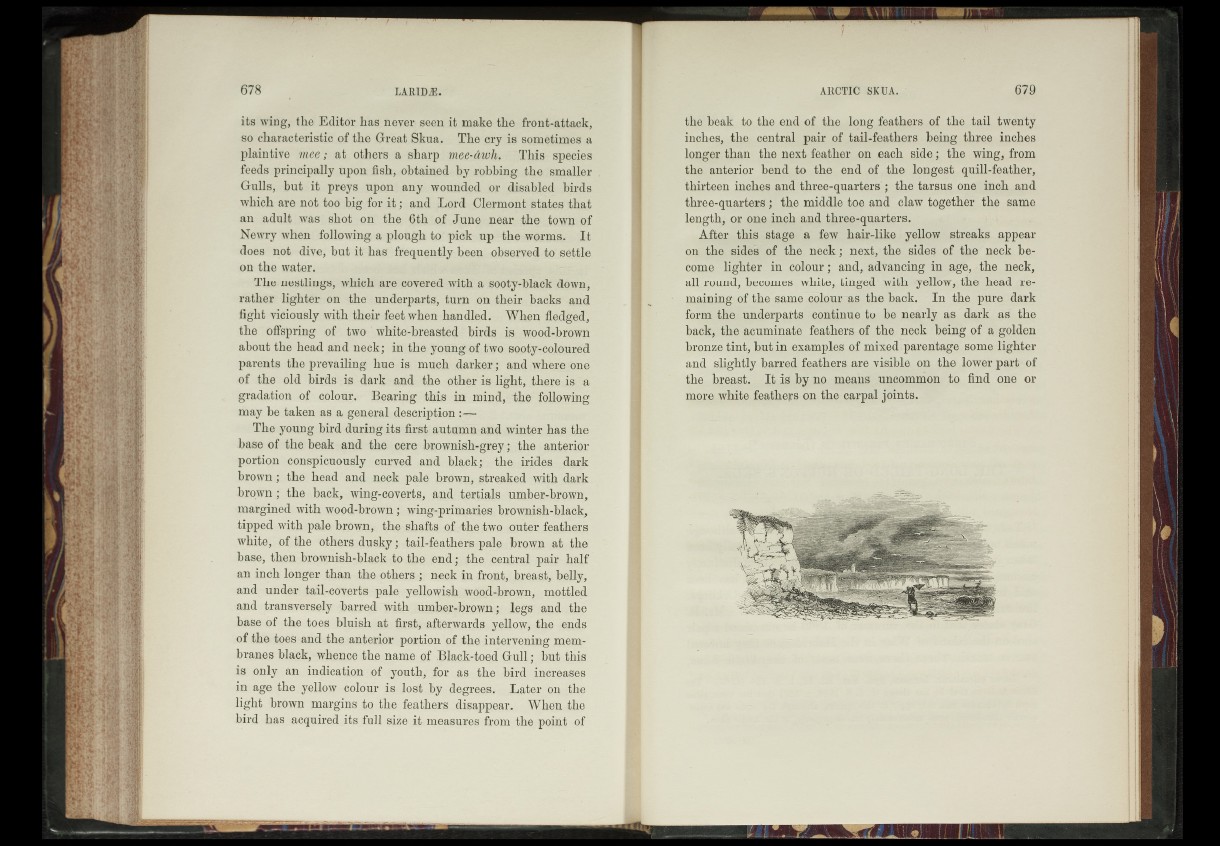
its wing, the Editor has never seen it make the front-attack,
so characteristic of the Great Skua. The cry is sometimes a
plaintive mee; at others a sharp mee-Awh, This species
feeds principally upon fish, obtained by robbing the smaller
Gulls, but it preys upon any wounded or #sabled birds
which are not too big for i t ; and Lord Clermont states that
an adult was shot on: the 6th of June near the town of
Newry when following a plough to pick up the worms. Jt
does not dive, but it has frequently been observed to settle
on the water.
The nestlings, which are covered with a sooty-black down,
rather lighter on the underparts, turn on their backs and
fight viciously with their feet when handled. When fledged,
the offspring of two' white-breasted birds is wsood-brown
about the head and neck; in the young of two softty^coloured
parents the prevailing hue is much darker; and where;one
of the old birds is dark and the other is light, there,is. a
gradation of colour. Bearing this in mind,- the following
may be taken as a general description :-r-
The young bird during its first autumn and winter has the
-base of the beak and the cere brownish-gjpyr;::the anterior
portion conspicuously curved and black;' the irides dark
brown; the head and neck pale brown, streaked with dark
brown; the back, wing-coverts, and tprtials umber,-brown,
margined with wopd-brown; wing-primaries brpwnish-hlaqk,
tipped with pale brown, the shafts of/the two outer feathers
white, of the others dusky; tail-feathers palp brown at the
base, then brownish-black to ,the end; ftbp, neutral pair half
an inphrlonger than the others*;- neck in -front, breast, belly,
and under tail-coverts pale yellowish wood-brown, mottled
and transversely barred with umbeivbrown; -legs and-the
base pf the toes bluish at first? afterwards yellow, the ends
of the toes and the anterior portion of the intervening membranes
black, whence the name pf Black-toed Gull; but this
is only an indication of youth, for as the bird increases
-in age the yellow colour is dost,,by degrees. Later\p^*the
light brown margins to the feathers disappear. When -the
bird has acquired its full size it measures from the point of
the beak to the end of the long feathers of the tail twenty
inches,, the central pair of tail-feathers being three inches
longer than the next feather on each side; the wing, from
the anterior bend to the end of the longest quill-feather,
thirteen inches and three-quarters’; the tarsus one inch aud
three-quarters; the middle toe and claw together the same
lengtly; or one inch and three-quarters.
After this stage a few hair-like; yellow streaks appear
on, the sides of the neck; next, the sides of the neck become
lighter* In'lcploiir; and, advancing in age, the neck,
all round, becomes' white, tinged' with .«yellow, the head remaining
of the same colour~as the back. In the pure dark
form the underpays continue to be nearly as dark as the
back, the acuminate, feathers of the neck being of a g-olden
bronze tint, but in examples pf mixed|parentage some lighter
and slightly barred feathers are visible, on tJkp„lower part of
the breast. It is by no means uncommon tp find one or
more white feathers on the carpal joints.